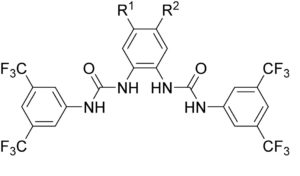The development of synthetic molecules capable of facilitating the transport of ions across cell membranes has become a prominent and active field of research. These compounds mimic the activity of natural ionophores and have found broad application in materials sciences, chemical biology and medicine.
The majority of known synthetic ionophores facilitate the transport of cations. However, there is mounting evidence to support the ability of anion selective ionophores (anionophores) to act as anticancer agents and novel leads in the treatment of channelopathies—diseases, such as cystic fibrosis, caused by dysfunctional ion channels or related regulatory proteins. The ultimate hope is that they can be used to restore ion channel function in such cases.
An important step toward practical application is to demonstrate the activity of anionophores not only in synthetic vesicle assays but in live cell environments. In a collaborative study between Prof. Phillip Gale of the University of Sydney, Prof. Anthony Davis and Prof. David Sheppard of the University of Bristol, the biological activity of a series of ortho-phenylene bis-urea (OPBU) anionophores was explored using a biological anion transport assay employing Fischer rat thyroid cells. This family of anionophores is readily prepared from commercially available starting materials using simple chemistry which allows for facile structural variation and the study of structure-activity relationships.
It was shown that activity was dependent on both the electronic nature and lipophilicity of the bis-urea anionophore. Interestingly, while lipophilicity was shown to promote intrinsic activity it also had a contrary effect on deliverability which hampered the anionophore’s effectiveness in living cells. Bis-urea 4a (Figure) was shown to be the most effective in all assays and is based on a difluorinated central scaffold.
This study provides interesting insight into the biological activity of this class of anionophores and is a promising first step toward their potential application in medicine.
To find out more see:
Anion transport by ortho-phenylene bis-ureas across cell and vesicle membranes
Christopher M. Dias, Hongyu Li, Hennie Valkenier, Louise E. Karagiannidis,
DOI: 10.1039/C7OB02787G
Victoria Corless is currently completing her Ph.D. in organic chemistry with Prof. Andrei Yudin at the University of Toronto. Her research is centred on the synthesis of kinetically amphoteric building blocks which offer a versatile platform for the development of chemoselective transformations with particular emphasis on creating novel biologically active molecules.











